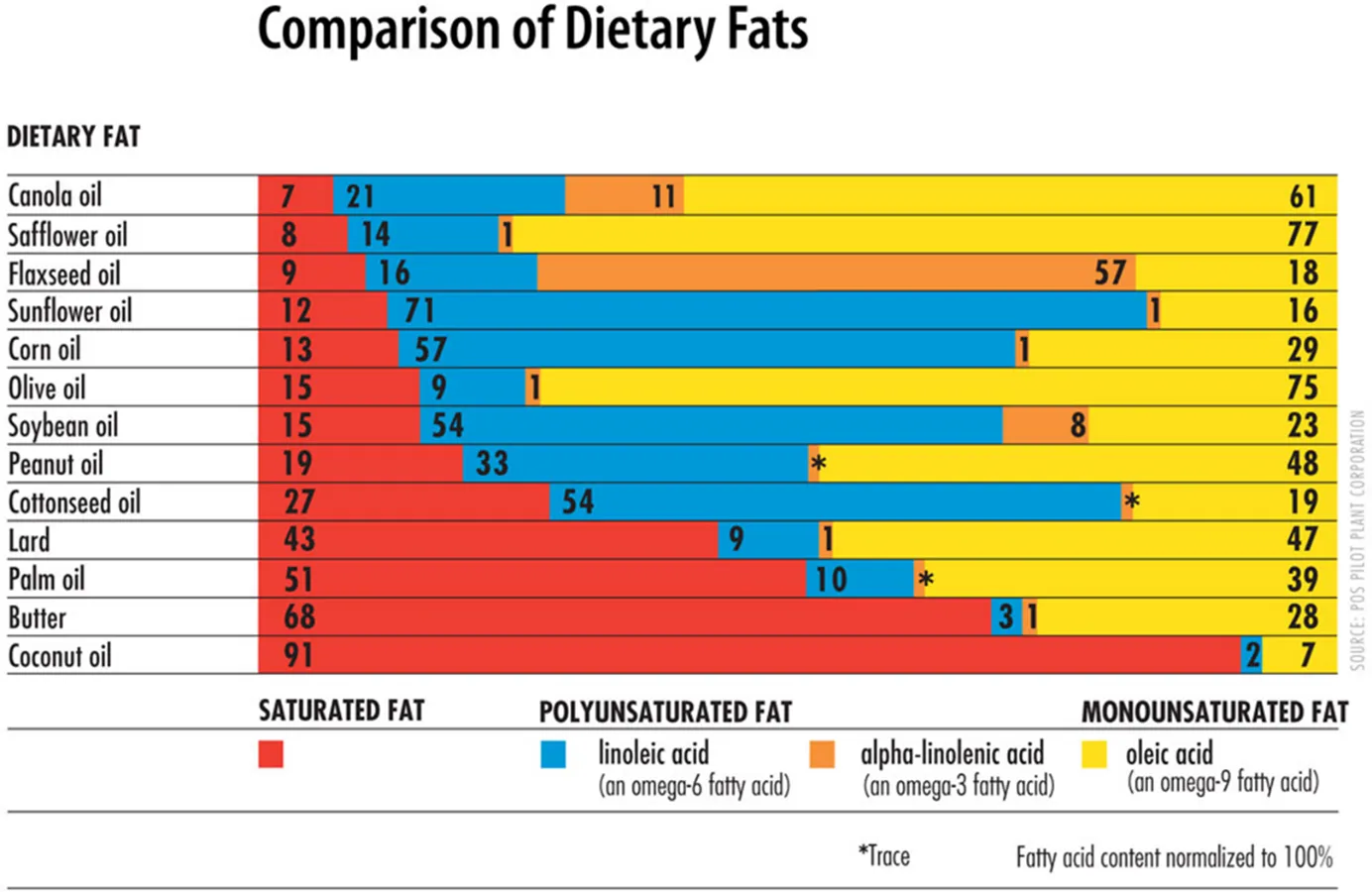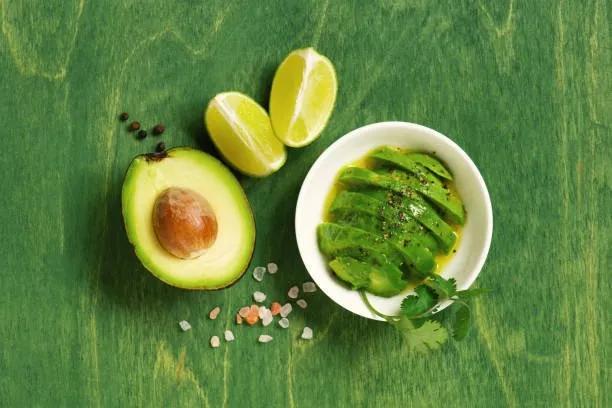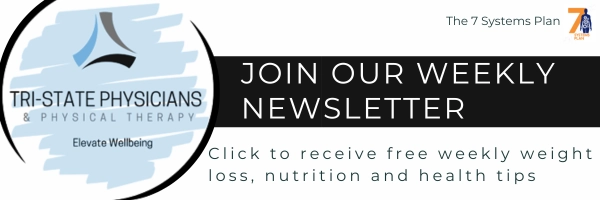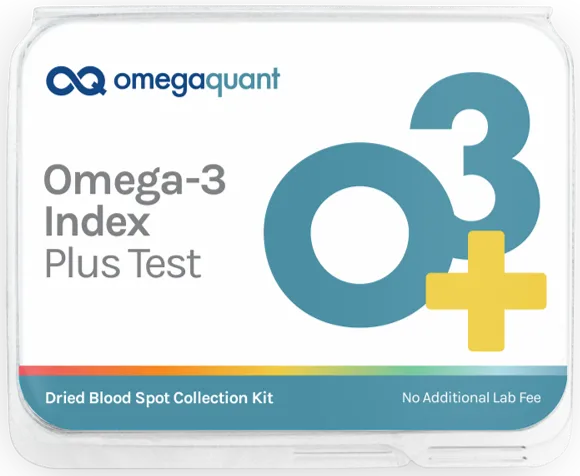The Skinny on Fats – This is Big in South Sioux City NE!
There is a lot you may not know about fat.
Look up any article or tune into any health program, and you will get an abundance of information and “expert” opinions on our most hated three-letter word — fat.
Most people don’t want to talk about fat in South Sioux City NE because it is a sore subject. We have been programmed to hate it on our bodies and secretly love it in our food. Messages like “just add more butter!” and “eat low-fat or else!” add to the confusion.
The 7 Systems Plan makes sense of all this confusion and explains exactly what the body does with fat. The truth is that we actually do need fat—the healthy types of fat, that is.
If you want to lose weight, avoid heart disease and cancer, prevent Alzheimer’s disease, and live a healthy life, you must understand fats. Some fats can kill you, and some can save your life. The balance and quantity of fats are two important keys.
A Word of Caution About Choosing a Low-Fat Diet in South Sioux City NE:
Remember, sugar and fats are added to food to make it taste good. Going on a low-fat diet often means settling for one high in sugar. A low-fat Oreo cookie may have 50 calories while a regular Oreo cookie has 53. The significance is that the cookie with the fat in it takes longer to break down and get into the bloodstream than the cookie with sugar alone.
Without fat, the sugar will shoot through the stomach and get into the bloodstream quicker. This causes blood sugar and insulin to spike. These calories are stored as fat on the belly. If a product is low-fat and, in a box or a bag, you need to take caution and look at the ingredients. Natural foods that have the right fats are always a better option.
There are different categories, or types, of fat.
Natural Fats
- Saturated
- Polyunsaturated
- Monounsaturated
All natural sources of fat include varying amounts of all three types.

Unnatural Fats
- Trans fat (also known as hydrogenated and partially hydrogenated oils)
Fats are the most calorie-dense macronutrient with nine calories per gram—that’s twice as many as protein and carbohydrates. All types of fat are equally fattening.
If you have ever eaten a low-fat diet, you will have noticed two things: The food does not taste as good, and you are not as satisfied. Since fats take longer to digest than carbohydrates, they tend to keep you satisfied longer and make you less hungry. A low-fat diet can slow your metabolism down significantly. It is not as simple as just counting calories.
Not eating the right fats in appropriate amounts will make it difficult to lose weight and will harm your health. Balance is the key.
Understand the different fats.
Saturated Fat
This fat is good when it comes from the right sources and is not overconsumed. Saturated fat is comprised of carbon chains that are totally saturated with fatty acids, and it remains solid at room temperature. Think of the fat on a steak, virgin coconut oil, and butter.
Because this fat is saturated, it does not become rancid quickly (there is no room for harmful molecules to attach to the carbon chains). It mostly comes from animal sources: meat, cheese, milk, and eggs. But it also comes from plant sources: avocados, coconut oil, and palm oil.
Saturated fat has been demonized, but it is necessary. It performs important jobs such as enhancing your immune function, decreasing heart risk factors, building stronger bones, improving liver function, making healthy lungs, improving brain function, and more.
The downside is that overconsumption of saturated fat is linked to heart disease and diabetes. When combined with bad carbohydrates, saturated fat can turn on the cholesterol-producing switch in the liver, causing the body to make more cholesterol. Saturated fat is bad only because we overconsume it and use too many unhealthy animal sources. As with all things in life, we must maintain the correct balance.
The fats in avocados and coconut oil are saturated, but they behave like monounsaturated fats in the body. As a result, they are better for us and have many health benefits.
Best sources of saturated fat:
- Coconut oil
- Avocados
- Pasture-raised, free-range, organic eggs
- Pasture-raised beef and lamb
Polyunsaturated Fats (PUFAs): Omega-3 and Omega-6
Polyunsaturated fat’s carbon chains are not totally saturated with fatty acids, so they are liquid at room temperature and in the refrigerator. Also, because it is not saturated, water, light, heat, and microbes can damage the fat and make it go rancid. Rancid fat not only tastes and smells bad but also hurts the body. Keeping it in a cool dark place can lengthen its shelf life. Let’s look at two types of PUFAs: omega-3 and omega-6.
Omega-3:
One of the best and most important PUFAs is omega-3. Omega-3 fat is good for us and hard to overconsume. There are now over 20,000 published scientific papers that support the health benefits of omega-3. Some of these benefits include support for cardiovascular health, healthy brain development, healthy immune response, lower inflammation, and improved overall health.
One of the best sources of omega-3 is wild-caught fish. Try to eat fish twice per week. Make sure you pick from the list in Appendix A, Part One in the 7 Systems Plan book. Focus on fish that are high in omega-3 and low in mercury. People who eat fish that is baked or broiled—not fried—have bigger brains and five times less incidence of Alzheimer’s disease than average.
There is no doubt that good fats make the brain work better. Dr. Lawrence Whalley reported, “People who eat oily fish or take fish oil supplements score 13 percent higher on IQ tests and are less likely to show sign of Alzheimer’s disease. The results suggest that fish oil users have younger brains than non-users. The aging of the brain is being slowed down by a year or two.”
Omega-3 has two main families: EPA (eicosapentaenoic acid) and DHA (docosahexaenoic acid). Each performs different functions in the body. Both are essential fatty acids that the body cannot produce; therefore, we should regularly consume them.
Over the last century, there has been an 80% decline in our omega-3 intake. The average American takes in only 120 milligrams of omega-3 per day. That number should be at least 2,000 milligrams. To make matters worse, there has been a tremendous increase in the consumption of inflammatory omega-6. Refined vegetable oils (omega-6) are used in fast foods, most snack foods, cookies, crackers, processed food, and junk food.
Years ago, cows ate grass and produced meat that was high in omega-3. Now cows eat grains high in omega-6, so meat has little omega-3. Similar to people, animals become what they eat. If chickens are fed omega-3-rich flaxseed, or if they are free-range, the eggs will be high in omega-3. Some eggs have up to 600 milligrams of omega-3 per egg, but corn-fed chickens produce eggs with little omega-3.
Best sources of omega-3:
- High-omega-3, low-mercury fish
- Omega-3 (EPA/DHA) supplements (Note: 98% of omega-3 supplements are worthless; use only triglyceride forms.)
- Chia and flax seeds
- Walnuts
- Kiwifruit
- Black raspberries
Omega-6:
Omega-6 fat can be good for us, but we really need very little of it, and it must come from the right sources. If overconsumed, it sets up an inflammatory cascade that leads to cancer, heart disease, arthritis, and most chronic diseases. In his book Toxic Fats, Barry Sears says that the underlying cause of most chronic disease is inflammation caused by an imbalance of fats.
Omega-6 comes mostly from seeds, grain, seed oils (like corn, soy, safflower, and sunflower oil), and meat that is grain fed. It is also an essential fatty acid and, like omega-3, it has several families. Some of the families are helpful while others are harmful.
Best sources of omega-6:
- Nuts
- Seeds
With PUFAs, it is all about balance. Fatty acids from fat make up part of the cell membranes and blood vessels (including brain cells, muscle cells, and nerve cells). The fat we eat is incorporated into our cell membranes.
A fluid cell membrane is critical for healthy cells and a healthy Delivery System. Some fats are more fluid and produce a cell membrane with better function, allowing good nutrients and hormones into the cell more efficiently. Omega-3 DHA is an essential fatty acid providing optimal fluidity to the cell membrane.
Consuming the wrong fats can result in poorly functioning cell membranes. Vegetable and grain oils high in omega-6, saturated fat (animal fat), and hydrogenated oils make a membrane that is more plastic than fluid. This will not let in the nutrients and hormones that the cell needs.
If the cells lining blood vessels are high in omega-3, the platelets (blood clot cells) bounce along freely and do not get stuck on the vessel wall. This keeps the cells in the bloodstream from clumping and forming plaque.
If vessels are high in omega-6, there is a greater chance of clots and plaque formation. These are the first signs of heart and arterial disease. The average American diet is high in omega-6, trans fat, and saturated fat. As a result, the average American suffers from inferior cell membranes and vessel lining.

Monounsaturated Fat (MUFA): Omega-9
This fat is good for us, and we should be consuming more of it. Studies show that MUFA lowers bad cholesterol, reduces heart disease, decreases stroke, improves insulin levels, and improves blood sugar. It is a healthy fat and functions as a key part of the 7 Systems Plan.
MUFA is liquid at room temperature and solid or cloudy when you put it in the refrigerator. It is more saturated than PUFA oil and therefore does not go rancid as quickly (though it should still be kept in a cool dark place).
Olive oil is the perfect example of a MUFA. Olives and nuts also have significant amounts of omega-9. All oils, nuts, and seeds have a combination of different fats in them, so it is important to use the ones with more omega-3 and omega-9 than omega-6.
Best sources of omega-9:
- Nuts and seeds
- Olives and avocados
- Extra virgin olive and coconut oil
In summary, use oils that are highest in omega-9 (e.g. olive oil) and omega-3 fat (e.g. fish oil) and lowest in saturated fat (animal fat) and omega-6 fat (e.g. vegetable oils).
Villainize unnatural fats.
Trans, hydrogenated, and partially hydrogenated fats are always bad in any amount because they are polyunsaturated fat that has been artificially transformed into a more saturated form. They are used in nearly all processed foods to help preserve their shelf life. They are the absolute worst of all fats.
To prevent PUFA from going rancid, manufacturers bubble hydrogen gas through the oil so that there are no open bonds where oxygen can attach and make it go rancid. During the hydrogenation process, fat molecules are “twisted” into different shapes. These different shapes are not recognized by the body, and they cause damage—especially to blood vessels. They also replace the good fats in cell membranes, impairing cell function. Remember that the fat eaten (good or bad) is incorporated into the cell membranes and vessel walls.
Many people wonder, “How bad can hydrogenated fats really be?”
More than 5 grams per serving of these fats is associated with a 25% increase in ischemic heart disease. A recent study showed that one additional serving of French fries per week for children between the ages of 3 and 5 increased the adult risk of breast cancer by 27%. There appears to be an increased negative effect when you combine bad fats with carbohydrates.
Fast foods are notorious for their trans-fat. Up to 30% of the oil used in restaurants can be this bad fat. If you want to make a healthy choice, avoid processed foods and eating out too often. Fortunately, some restaurants have decreased their use of trans-fat, but processed foods are still loaded with it. Always read the labels, and avoid all foods with trans-fat, hydrogenated oil, and partially hydrogenated oil.
They should not be in your shopping cart or your body.
Best sources of unnatural fats:
None!
Identify Your Fat Intake
The ratio of omega-6 to omega-3 in cells should be 2:1. Studies show that if the ratio is greater than 15:1, you are at risk for chronic disease. The average American’s ratio is 20:1! You can determine your levels with a simple test. (shown below)
Recipe of the Week
From Teresa’s 7 Systems Kitchen
Enhanced Avocado

- 1 ripe avocado
- Extra virgin olive oil
- Lemon juice OR lime juice
- Himalayan Pink Salt
- Spice of your choice (if desired to season): chili, cumin, garlic powder, onion powder…
- Optional: Finely diced red onion, minced garlic, chives, scallions, shallots, or cilantro.
Instructions:
A ripe avocado should yield to firm gentle pressure and is often darker in color.
Rinse and dry the avocado. Cut it in half lengthwise, remove the pit. Scoop into a bowl and coarsely mash with a fork. Stir in any spices and other optional ingredients that you wish. Drizzle with olive oil and juice. Sprinkle with salt. Enjoy!
Sign up below to get our weekly newsletter
sent directly to your email inbox!
OFFICE HOURS
Monday
8:00am - 6:00pm
Tuesday
8:00am - 6:00pm
Wednesday
8:00am - 6:00pm
Thursday
8:00am - 6:00pm
Friday
8:00am - 6:00pm
Saturday
8:00am - 10:45am
Sunday
Closed
Tri-State Physicians &
Physical Therapy Clinic
3900 Dakota Avenue #6
South Sioux City, NE 68776






